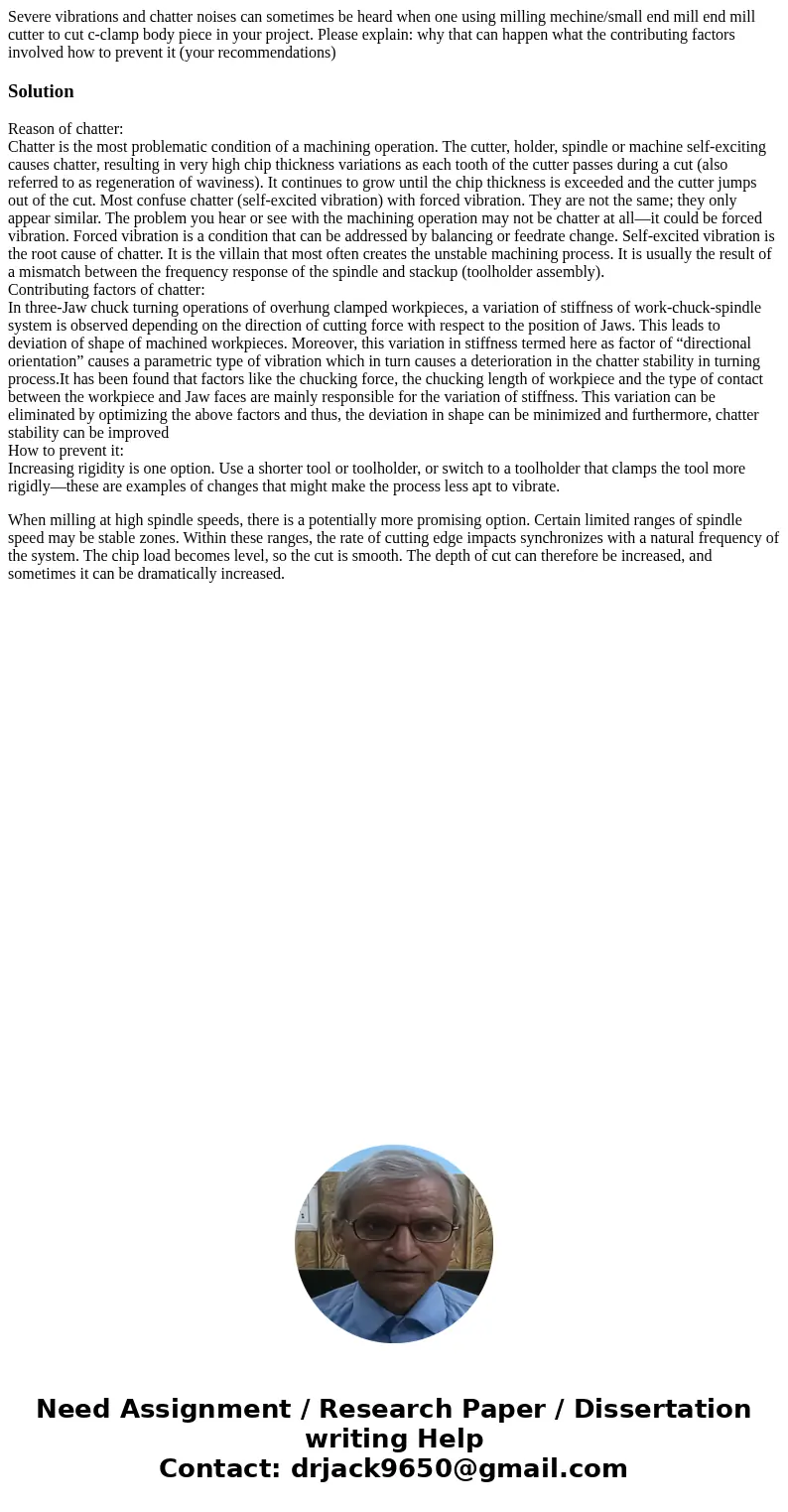Severe vibrations and chatter noises can sometimes be heard
Solution
Reason of chatter:
Chatter is the most problematic condition of a machining operation. The cutter, holder, spindle or machine self-exciting causes chatter, resulting in very high chip thickness variations as each tooth of the cutter passes during a cut (also referred to as regeneration of waviness). It continues to grow until the chip thickness is exceeded and the cutter jumps out of the cut. Most confuse chatter (self-excited vibration) with forced vibration. They are not the same; they only appear similar. The problem you hear or see with the machining operation may not be chatter at all—it could be forced vibration. Forced vibration is a condition that can be addressed by balancing or feedrate change. Self-excited vibration is the root cause of chatter. It is the villain that most often creates the unstable machining process. It is usually the result of a mismatch between the frequency response of the spindle and stackup (toolholder assembly).
Contributing factors of chatter:
In three-Jaw chuck turning operations of overhung clamped workpieces, a variation of stiffness of work-chuck-spindle system is observed depending on the direction of cutting force with respect to the position of Jaws. This leads to deviation of shape of machined workpieces. Moreover, this variation in stiffness termed here as factor of “directional orientation” causes a parametric type of vibration which in turn causes a deterioration in the chatter stability in turning process.It has been found that factors like the chucking force, the chucking length of workpiece and the type of contact between the workpiece and Jaw faces are mainly responsible for the variation of stiffness. This variation can be eliminated by optimizing the above factors and thus, the deviation in shape can be minimized and furthermore, chatter stability can be improved
How to prevent it:
Increasing rigidity is one option. Use a shorter tool or toolholder, or switch to a toolholder that clamps the tool more rigidly—these are examples of changes that might make the process less apt to vibrate.
When milling at high spindle speeds, there is a potentially more promising option. Certain limited ranges of spindle speed may be stable zones. Within these ranges, the rate of cutting edge impacts synchronizes with a natural frequency of the system. The chip load becomes level, so the cut is smooth. The depth of cut can therefore be increased, and sometimes it can be dramatically increased.

 Homework Sourse
Homework Sourse